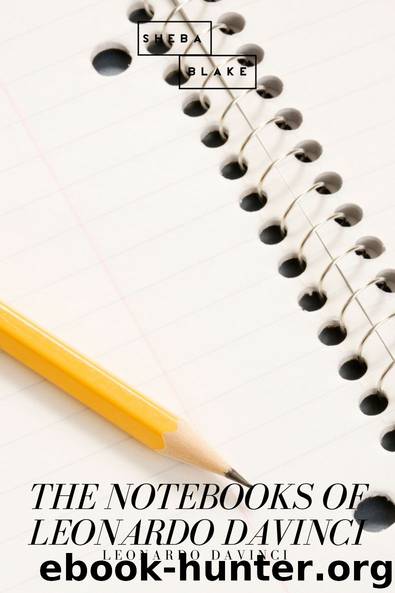The Notebooks of Leonardo DaVinci by Leonardo DaVinci

Author:Leonardo DaVinci [DaVinci, Leonardo]
Language: eng
Format: epub
Publisher: manybooks.net
The arch itself tends to fall. If the arch be 30 braccia and the interval between the walls which carry it be 20, we know that 30 cannot pass through the 20 unless 20 becomes likewise 30. Hence the arch being crushed by the excess of weight, and the walls offering insufficient resistance, part, and afford room between them, for the fall of the arch.
But if you do not wish to strengthen the arch with an iron tie you must give it such abutments as can resist the thrust; and you can do this thus: fill up the spandrels m n with stones, and direct the lines of the joints between them to the centre of the circle of the arch, and the reason why this makes the arch durable is this. We know very well that if the arch is loaded with an excess of weight above its quarter as a b, the wall f g will be thrust outwards because the arch would yield in that direction; if the other quarter b c were loaded, the wall f g would be thrust inwards, if it were not for the line of stones x y which resists this.
787.
PLAN.
Here it is shown how the arches made in the side of the octagon thrust the piers of the angles outwards, as is shown by the line h c and by the line t d which thrust out the pier _m_; that is they tend to force it away from the centre of such an octagon.
788.
An Experiment to show that a weight placed on an arch does not discharge itself entirely on its columns; on the contrary the greater the weight placed on the arches, the less the arch transmits the weight to the columns. The experiment is the following. Let a man be placed on a steel yard in the middle of the shaft of a well, then let him spread out his hands and feet between the walls of the well, and you will see him weigh much less on the steel yard; give him a weight on the shoulders, you will see by experiment, that the greater the weight you give him the greater effort he will make in spreading his arms and legs, and in pressing against the wall and the less weight will be thrown on the steel yard.
IV.
ON FOUNDATIONS, THE NATURE OF THE GROUND AND SUPPORTS.
789.
The first and most important thing is stability.
As to the foundations of the component parts of temples and other public buildings, the depths of the foundations must bear the same proportions to each other as the weight of material which is to be placed upon them.
Every part of the depth of earth in a given space is composed of layers, and each layer is composed of heavier or lighter materials, the lowest being the heaviest. And this can be proved, because these layers have been formed by the sediment from water carried down to the sea, by the current of rivers which flow into it.
Download
This site does not store any files on its server. We only index and link to content provided by other sites. Please contact the content providers to delete copyright contents if any and email us, we'll remove relevant links or contents immediately.
Kathy Andrews Collection by Kathy Andrews(10543)
The remains of the day by Kazuo Ishiguro(7570)
Spare by Prince Harry The Duke of Sussex(4216)
Paper Towns by Green John(4175)
The Body: A Guide for Occupants by Bill Bryson(3813)
Be in a Treehouse by Pete Nelson(3230)
Harry Potter and the Goblet Of Fire by J.K. Rowling(3062)
Goodbye Paradise(2972)
Never by Ken Follett(2901)
Into Thin Air by Jon Krakauer(2710)
The Remains of the Day by Kazuo Ishiguro(2626)
The Genius of Japanese Carpentry by Azby Brown(2613)
The Cellar by Natasha Preston(2602)
Drawing Shortcuts: Developing Quick Drawing Skills Using Today's Technology by Leggitt Jim(2534)
120 Days of Sodom by Marquis de Sade(2444)
Architecture 101 by Nicole Bridge(2355)
Machine Learning at Scale with H2O by Gregory Keys | David Whiting(2305)
The Man Who Died Twice by Richard Osman(2303)
Industrial Automation from Scratch: A hands-on guide to using sensors, actuators, PLCs, HMIs, and SCADA to automate industrial processes by Olushola Akande(2104)
